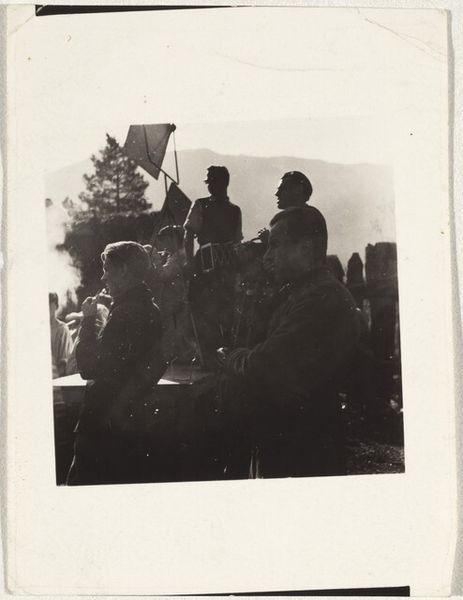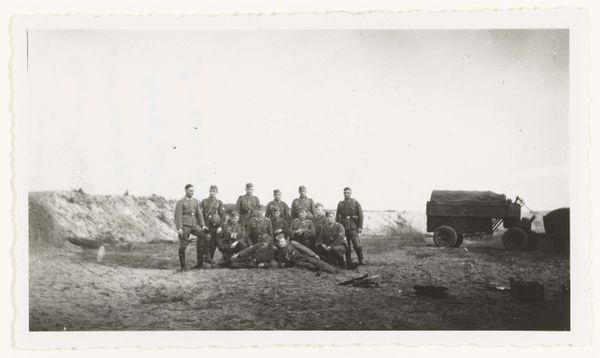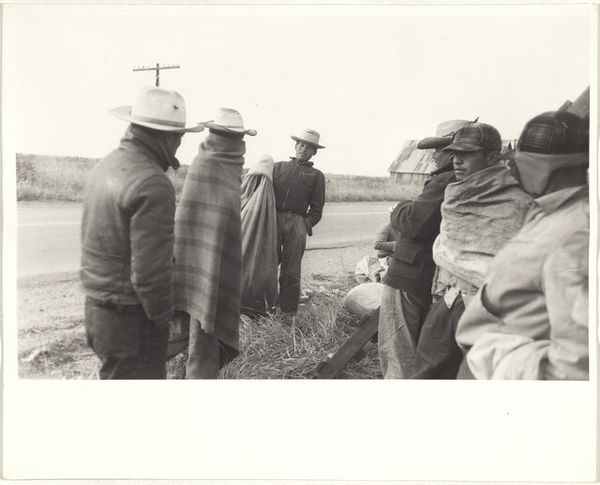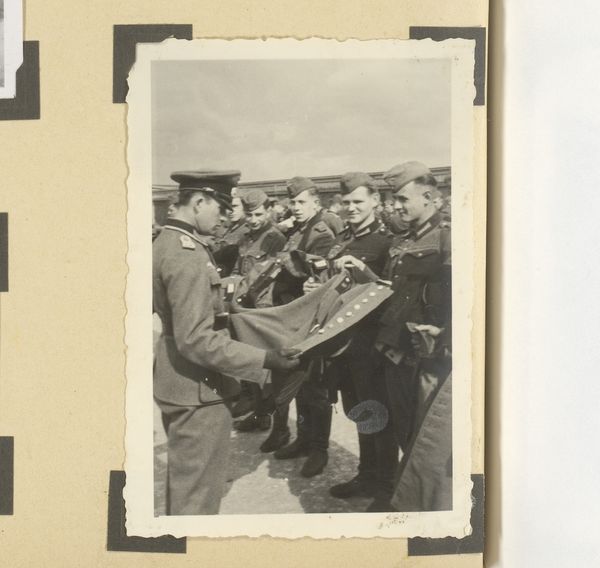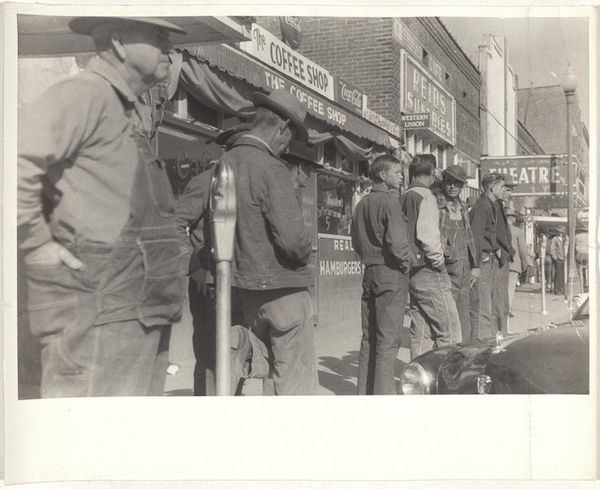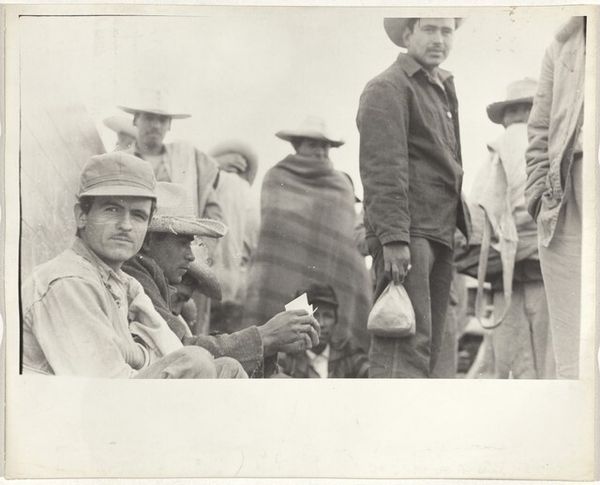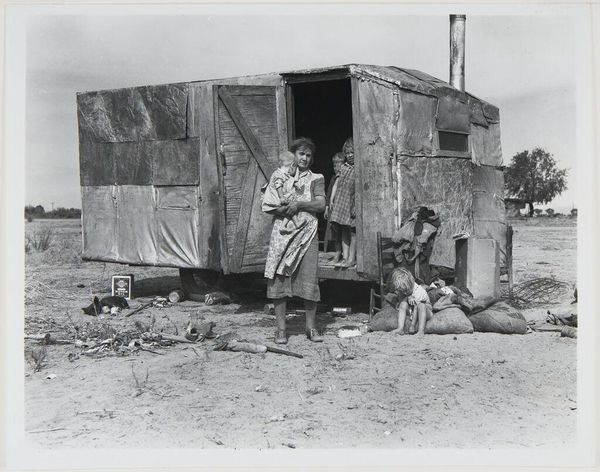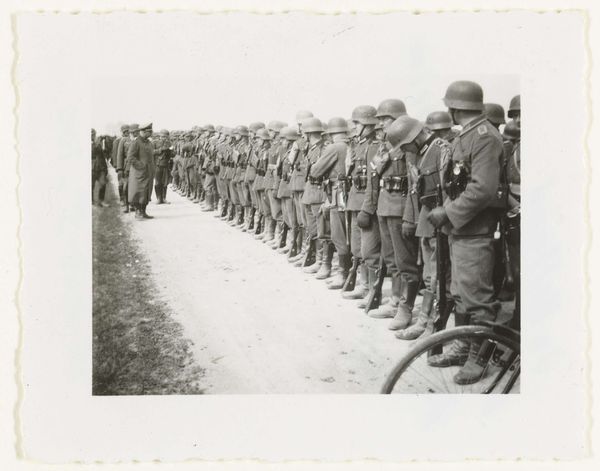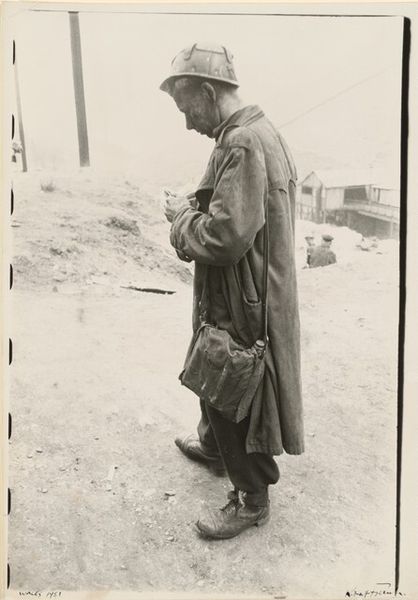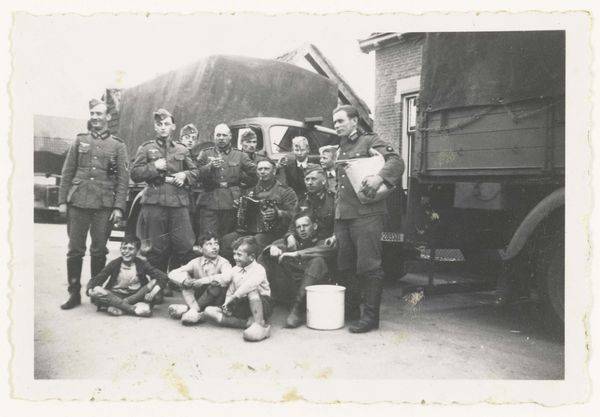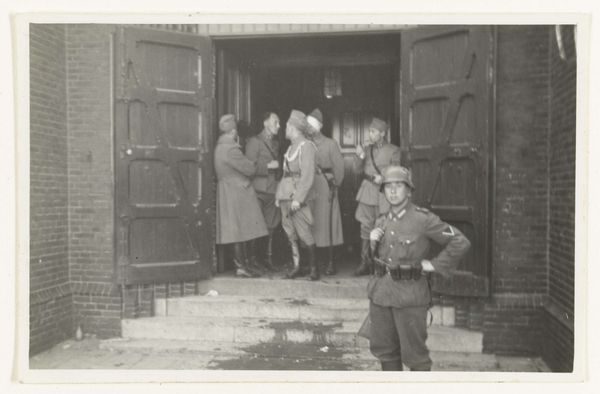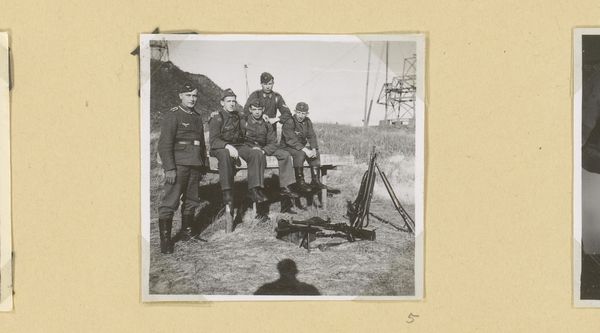
Dimensions: sheet: 25.3 x 20.4 cm (9 15/16 x 8 1/16 in.)
Copyright: National Gallery of Art: CC0 1.0
Curator: Let's turn our attention to Robert Frank's "Cowboys--Butte, Montana," a gelatin silver print from 1956. Frank's work is interesting for its focus on capturing a sense of everyday experience and material culture, and this image seems characteristic of that approach. Editor: Right, my first impression is…resignation, maybe? They look so weary, even the ones perched on the fence look weighed down by something. Like they are trapped behind those barriers and the flatness of the frame. Curator: It’s worth considering the historical context. Post-war America was undergoing massive industrial and social changes. Frank's work, created while traveling the US on a Guggenheim Fellowship, shows a particular interest in the everyday struggles and the undercurrents of alienation within that booming capitalist landscape. Look at their clothing— the textures, the repeated plaid patterns—mass produced garments signaling a working-class identity. Editor: Definitely. The textures do so much, adding depth. The graininess of the print itself, too. It feels like a forgotten memory, or maybe a staged scene. And those dark shadows! The third cowboy casts this ominous presence... almost comically so with the large hat and small cigarette. There’s such loneliness here. Do you feel that? Curator: Absolutely. The shadows emphasize not just the visual, but also the literal darkness surrounding their prospects in this economic structure. The beer bottle laying discarded near the feet of the figure in the plaid shirt adds to that narrative; consider the impact of this industry. Note that Frank is not romanticizing the West here. He shows its often-ignored working face. Editor: It really subverts any romantic ideal. Those low-hanging cowboy hats really box the characters into their worlds. And what an eye! To choose *this* moment. What they do when they think no one is looking. Curator: And by showcasing the lack of artifice in the cowboy image, Frank critiques the constructed nature of identity, especially gendered identity within labor systems. There is labor behind all of those rough and rugged symbols and those are workers more than the archetype that those objects and styles indicate. Editor: A simple snapshot but such complex emotions boiling underneath the surface. Even the dullness of the silver gelatin heightens that atmosphere, wouldn't you agree? Curator: Agreed. Through the focus on those elemental details and forms of display and distribution we begin to observe just how complicated American myth-making has become by mid-century. Editor: Exactly, an icon turned everyman in just one snapshot, thanks to the lens and printing process chosen by Frank.
Comments
No comments
Be the first to comment and join the conversation on the ultimate creative platform.
